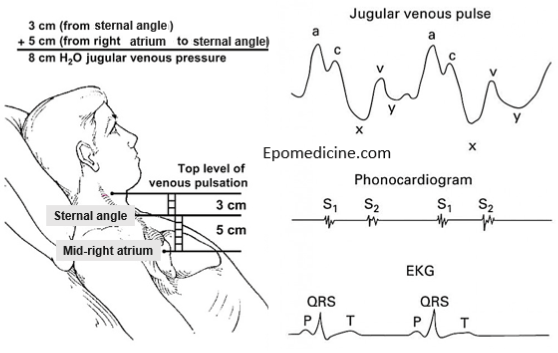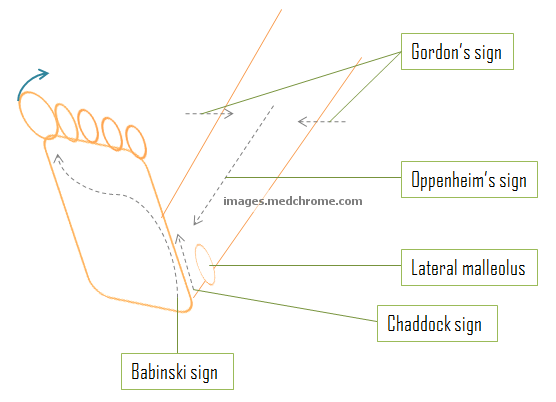The primary malignancies that commonly metastasize to the spine can be recalled using the mnemonic: PB KTL (or “Lead Kettle”.
- Prostate
- Breast
- Kidney
- Thyroid
- Lungs
In women, 80% metastases are from lung and breast and in men, 80% are from lung and prostate.
LMNOP approach
A. Location/Level
80% involve well-vascularized vertebral bodies rather than posterior elements.
Algorithm for determining appropriate surgical approach according to spinal level of metastases:
| APPROACH | THORACIC AND LUMBAR LEVELS |
| Posterior | |
| Laminectomy | All levels |
| Posterolateral | Preferred for lesions from T2-T5 (great vessels and heart complicate anterior approaches) |
| Transpedicular | All levels |
| Constotransversectomy | Thoracic |
| Lateral extracavitary | All levels |
| Anterolateral | |
| Thoracotomy | T5-T10 |
| Thoracoabdominal | T11-L1 |
| Retroperitoneal | L2-L4 |
| Anterior | |
| Anterior cervicothoracic | T1-T3 |
| Trap door exposure | T3-T4 |
| Transperitoneal | L5 |
| Combined anterior-posterior | |
| Staged | All levels |
| Simultaneous | T5-L3 |
Surgical stabilization of sacral metastases (can be effectively treated with radiation) is rarely indicated due to 3 main reasons:
- Capacity of sacral canal to accommodate large tumor volumes before development of neurologic symptoms
- Higher degree of bone destruction needed to produce instability
- Difficulty in effectively stabilizing LS junction in case of significant lytic lesions
B. Mechanical Stability
Spinal Instability Neoplastic Score (SINS) can be remembered using a mnemonic.
Mnemonic: SPINAL
1. Smushed (collapsed) vertebral body
- >50% collapse: 3 points
- <50% collapse: 2 points
- no collapse with >50% vertebral body involved: 1 point
- none: 0 points
2. Pain
- Mechanical pain: 3 points
- Occasional non-mechanical pain: 1 point
- Painless: 0 points
3. Involvement of posterior spinal element
- Bilateral: 3 points
- Unilateral: 1 point
- None: 0 points
4. Nature of bone metastasis
- Lytic: 2 points
- Mixed: 1 point
- Blastic: 0 points
5. Alignment
- Subluxation/translation: 4 points
- Denovo deformity (kyphosis/scoliosis): 2 points
- Normal: 0 points
6. Location
- Junctional spine (C0-C2, C7-T2, T11-L1, L5-S1): 3 points
- Mobile spine (C3-C6, L2-L4): 2 points
- Semirigid spine (T3-T10): 1 point
- Rigid (S2-S5): 0 points
Interpretation of scores:
- 0 to 6: Stable
- 7 to 12: Potentially unstable (may be candidates for percutaneous vertebral augmentation)
- 13 to 18: Unstable (better treated with spinal instrumentation)
C. Neurology
5-14% patients develop MESCC (Metastatic Epidural Spinal Cord Compression).
Direct decompressive surgical resection is superior to traditional laminectomy.
Surgery followed by radiotherapy is superior to radiotherapy followed by surgery.
D. Oncology
a. Radiosensitivity:
- Radio-sensitive: Most of the common solitary metastasis to the spine (breast, lung, prostate, etc.)
- Radio-resistant: Renal cell carcinoma
b. Growth: determines expected survival time
- Slow: Breast, prostate, thyroid, carcinoid
- Moderate: Kidney, uterus
- Rapid: Lung, liver, stomach, esophagus, pancreas, and tumors of unknown origin
E. Patient fitness, Prognosis and response to Prior therapy
Nonsurgical treatments such as radiation therapy, radiosurgery, and percutaneous vertebral augmentation are most appropriate for patients with significant medical risks or limited prognosis.
Currently, radiosurgery may be employed in circumstances where radiation therapy failed to control the progression of tumor as long as epidural compression of the spinal cord is minimal.
To determine the choice of treatment and method of resection, 3 key prognostic features must be analyzed:
- Malignancy grade of the rimary tumor (slow growth, 1 point; moderate growth, 2points; rapid growth, 4 points)
- Visceral metastases (no metastases, 0 points; treatable, 2 points; untreatable, 4 points)
- Bone metastases (solitary or isolated, 1point; multiple, 2 points).
Interpretation of prognostic score:
- 2 to 3: wide or marginal excision for long-term local control
- 4 to 5: marginal or intralesional excision for middle-term local control
- 6 to 7: palliative surgery for short term palliation
- 8 to 10: nonoperative supportive care.
For En-bloc resection of thoracolumbar metastases:
- Indications –
- Solitary spinal metastasis or oligometastatic spinal lesion
- Absence of (or fully treated) visceral metastases
- Favorable histological type (breast, prostate, renal, thyorid)
- Feasibility –
- Surgical staging
- Medical fitness
Further reading and sources:
Paton GR, Frangou E, Fourney DR. Contemporary treatment strategy for spinal metastasis: the “LMNOP” system. Can J Neurol Sci. 2011 May;38(3):396-403. doi: 10.1017/s031716710001177x. PMID: 21515496.
Fourney, D. R., & Gokaslan, Z. L. (2005). Use of “MAPS” for determining the optimal surgical approach to metastatic disease of the thoracolumbar spine: anterior, posterior, or combined. Journal of Neurosurgery: Spine, 2(1), 40–49. doi:10.3171/spi.2005.2.1.0040

He is the section editor of Orthopedics in Epomedicine. He searches for and share simpler ways to make complicated medical topics simple. He also loves writing poetry, listening and playing music. He is currently pursuing Fellowship in Hip, Pelvi-acetabulum and Arthroplasty at B&B Hospital.



